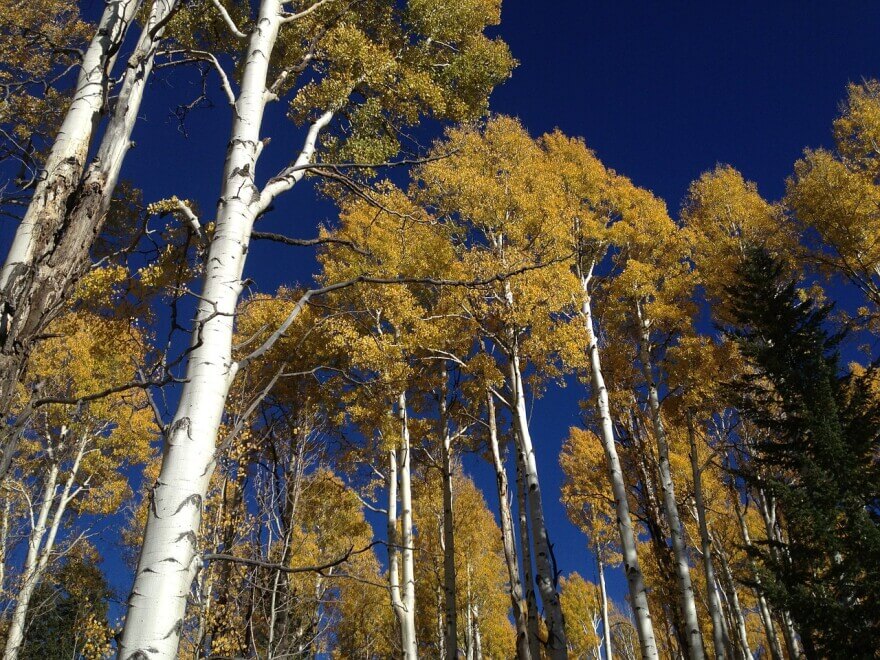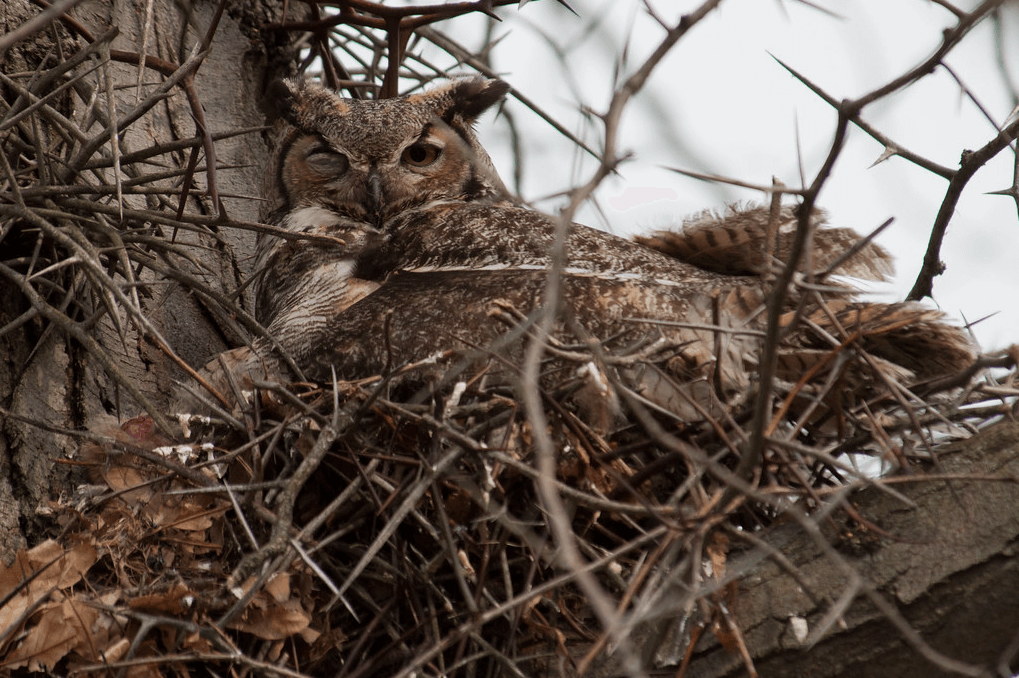Ancient Giants: The Mysterious Beauty Of An Aspen Grove
By Gilia Patterson
Broadcast 7.12.2015

Aspen grove. Public domain image.
Listen:
The hot summer sun beats down on my back as I climb the trail to the ridge. Looking for a place to wait for my hiking companion, I find a grove of quaking aspen. Their distinctive white bark is beautiful and their leaves rustle at the hint of a breeze.
They do not offer much shade, so I instead opt for the shelter of a much larger ponderosa pine. Compared to the sturdy trunk of this pine, the aspen stems appear slender, fragile, and not quite mature. This stand of aspen, however, is probably much older and much larger than my pine. In fact, aspen are some of the largest and longest-lived organisms on the planet.
Although the grove of aspen appears to contain more than twenty trees, it is actually one organism that arose from a single seed. Each aspen trunk, known as a ramet, shares the same underground root system. New ramets form from roots that grow horizontally underground for up to 100 feet. This is called vegetative, or asexual, reproduction. The collection of ramets connected to a single root system is called a clone or a colony, and all ramets in it are genetically identical.
New colonies arise through sexual reproduction. In the spring, aspen produce catkins, and pollen from male catkins fertilizes eggs in female catkins. The fertilized eggs become seeds that float through the air as white, cottony tufts. Each seed can create a new colony.
A single seed gave rise to the largest and oldest known aspen colony. The colony, named Pando, covers 106 acres in Utah and contains about 47,000 ramets. It weighs more than 13 million pounds and is one of the largest organisms in the world. Scientists have estimated that Pando is an amazing 80,000 years old. Biologists identified Pando in 1976 by careful observation, and other biologists verified the boundaries in 2008 using modern molecular techniques. They found that ramets along the edges are genetically identical to those in the middle.
Anyone can tell different aspen colonies apart through careful observation. The time in the spring that aspen produce leaves is genetically determined. Clear boundaries form as different colonies leaf out at slightly different times. The angle between the branch and the trunk of ramets is also genetically determined. All of the ramets of one colony may form 45 degree branch angles, whereas a neighboring colony may form 80 degree branch angles. When used to identify colonies, these physical traits give the same results as molecular techniques.
How do aspen grow so large and live so long? One significant reason is that aspen thrive on fires, avalanches, and other disturbances. When all ramets are destroyed, an aspen simply regenerates from its underground root system. A colony senses that ramets have been knocked down and produces new ramets even faster. A colony can expand over a large area because aspen transport water and nutrients through the root system from ramets in wet, rich soil to ramets in dry, poor soil. As long as disturbances regularly knock down ramets and surrounding trees, an aspen will live and grow.
Aspen are the perfect organism in which to study aging. We don’t know much about how an aspen changes over thousands of years, and if its fitness or fertility declines. These topics are the subject of current research. One 2010 study looked at fertility of male aspen colonies by counting pollen grains and found fertility declined with age. The authors predicted that after 500 to 20,000 years, the colonies would not be able to sexually reproduce. Future studies will help us understand more of the aspen’s mysteries.
My friend catches up to me and I continue on the trail, leaving the aspen grove behind. I have no way of knowing how long this grove has been here or how long it will live. But my guess is that, centuries from now, hikers like me will still pause to enjoy its beauty.
Every week since 1991, Field Notes has inquired about Montana’s natural history. Field Notes are written by naturalists, students, and listeners about the puzzle-tree bark, eagle talons, woolly aphids, and giant puffballs of Western, Central and Southwestern Montana and aired weekly on Montana Public Radio.
Click here to read and listen to more Field Notes. Field Notes is available as a podcast! Subscribe on iTunes, Google Play, or wherever you listen to podcasts.
Interested in writing a Field Note? Contact Allison De Jong, Field Notes editor, at adejong [at] montananaturalist [dot] org or 406.327.0405.
Want to learn more about our programs as well as fun natural history facts and seasonal phenology? Sign up for our e-newsletter! You can also become a member and get discounts on our programs as well as free reciprocal admission to 300+ science centers in North America!












